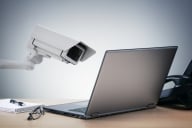You have /5 articles left.
Sign up for a free account or log in.
When Apple unveiled the iPad just over a year ago, publishers had high hopes that it would finally bump e-textbooks into the mainstream. But while the Apple iPad and computing tablet kin have made rapid gains on college campuses, printed textbooks are still alive and well thanks to a boom in rentals, according to a new survey from Student Monitor.
The survey, which polled 1,200 full-time students (average age: 20.6) at four-year institutions in March, found that the proportion of students who rented at least one textbook this spring doubled from last spring, leaping from 12 percent to 24 percent. Students who rented reported an average savings of $127. And the renting trend shows no sign of slowing: 36 percent of underclassmen said they are either likely or very likely to rent at least one textbook next semester.
The most popular rental source was campus bookstores, many of which made a big push to get out ahead of the rental trend by expanding (and publicizing) their rental operations prior to last fall. But students appeared to be most satisfied with their experiences with the independent book rental site Chegg.com, which they gave superior marks for price, punctuality, and ease of use.
E-textbooks, meanwhile, have continued to lag. Only 5 percent of the survey respondents said they purchased access to an e-textbook this spring. Two percent bought e-textbooks for more than one class. The most common reason for going electronic? “My professor required me to.”
Tablet computers, and especially the iPad, have nonetheless seized the cash and imaginations of students. As far as cachet, the Apple device is not quite as “in” as beer — but it is neck-in-neck with coffee, according to the survey, which polls students on a broad range of media and "lifestyle" tastes. More relevantly, the iPad is just as “in” (Student Monitor did not qualify the term) as laptops, even though 87 percent of respondents owned a laptop while just 8 percent owned an iPad. Nearly half reported being “interested in purchasing a wireless reading device,” with 70 percent of those students saying they had their eye on an iPad.
In fact, various forms of technology nearly swept the top trends on college campuses, with “drinking beer” the only non-tech interruption in a top 5 dominated by Facebook, iPhones, text messaging, and laptops. (“Working” and “going to grad school” were considered less “in” — though to the extent that the term might be interpreted as an observation of what is cool and/or new, that might not come as a surprise.)
Smartphones — i.e., iPhones, Androids, Blackberrys, and other devices that double as pocket-sized computers — also continue to proliferate on campuses. The gadgets, which are either soul-sapping attention vampires or revolutionary learning aids, depending on whom you ask, are now more than halfway to saturating the student market, according to the survey: 54 percent of students now own a smartphone, up from 41 percent at this time last year.
While students tend to favor the online versions of national newspapers, they still like having their student newspaper in dead-tree form. If forced to choose between the two media, 38 percent said they would pick newsprint, while just 13 percent would opt for Web-only. And while three-quarters of students said their campus newspaper was available online, less than a fifth said they had read the Web version in the past month.
For the latest technology news and opinion from Inside Higher Ed, follow @IHEtech on Twitter.








